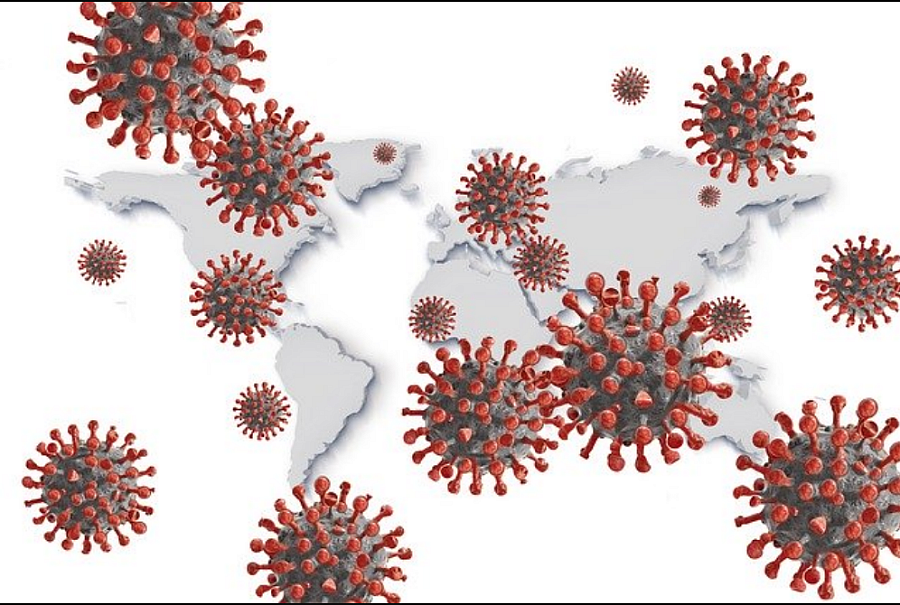Coronavirus Files: FDA issues historic Pfizer authorization, ICUs fill up, infection in five minutes


FDA issues historic Pfizer vaccine authorization
Trump administration passed on chance to secure additional vaccine doses from Pfizer
“Before Pfizer’s coronavirus vaccine was proven highly successful in clinical trials last month, the company offered the Trump administration the chance to lock in supplies beyond the 100 million doses the pharmaceutical maker agreed to sell the government as part of a $1.95 billion deal over the summer,” The New York Times reported last Monday. The administration passed on that chance, raising questions about whether the U.S. will have an adequate supply of the two-dose vaccine for the general public next year. Pfizer has since signed deals, including with the European Union, which secured 200 million doses. While Trump has mentioned plans to sign an executive order to ensure that other countries will not get the vaccine until all Americans are vaccinated, “the executive order by itself appears to have no real teeth and does not expand the U.S. supply of doses,” write Sharon LaFraniere, Katie Thomas and Noah Weiland of The New York Times.
Dr. Moncef Slaoui, who is leading the government’s vaccine effort, told Good Morning America that the administration had been looking at several vaccine candidates over the summer before the deal was made and was reluctant to buy too much of a vaccine whose effectiveness was uncertain.
ICUs around the country are filling up, halfway through the holiday season
“New data released by the Department of Health and Human Services on Monday gives the most detailed picture to date of how COVID-19 is stressing individual hospitals in the United States,” said Sean McMinn and Pien Huang during NPR’s Monday Morning Edition. This is the first time the department has released COVID-19 data at the facility level, painting a more accurate picture of how hospitals around the country are coping with the current surge in coronavirus cases. By highlighting regional hotspots, the data can identify areas of hospital strain even in states that are doing well overall. Key findings from the data include high levels of strain in both large and small hospitals. The states with the most counties above a 90% capacity threshold: Kentucky, Georgia, Minnesota, Oklahoma and Texas.
While public health experts initially raised concerns about political influence when HHS took control of pandemic data from the CDC, hospital reporting has improved in recent months. What remains to be seen is a link between reliable data and the federal government’s response to the pandemic.
Some counties in California’s agricultural region hit full capacity last week, and the country continues to experience a surge in COVID-19 cases following the Thanksgiving holiday. “I don’t think we’ve seen the peak,” Dr. Rais Vohra, Fresno County Department of Public Health, told the Los Angeles Times. “I think the peak is yet to come, and I’m very concerned that our hospitals will not be able to meet the demands that will be placed on them.” Health officials around the country are urging Americans to stay home in the next few weeks, fearing a surge upon a surge as Christmas approaches.
Seoul student infected with COVID-19 after 5 minutes of indoor exposure
A new study published in the Journal of Korean Medical Science found that a South Korean student contracted COVID-19 from an out-of-towner in a restaurant after only five minutes of exposure from 20 feet away. “The conclusions raised concerns that the widely accepted standard of six feet of social distance may not be far enough to keep people safe,” writes Victoria Kim of the Los Angeles Times. The study’s authors wrote that “quarantine and epidemiological investigation” guidelines must be updated to reflect the increased range of potential exposure from aerosolized droplets while indoors. Study authors relied on contact tracers, the country’s Epidemic Investigation Support System and even an aerodynamics engineer to solve the mystery of how the high school student contracted the virus in a town that hadn’t seen any new cases in two months. These findings could (and should) have real implications for how Americans behave during the colder months ahead.
From the Center for Health Journalism: Aging and Alone During COVID-19
Join the Center for Heath Journalism for a free webinar on Wednesday, December 16 at 10 a.m. PT / 1 p.m. ET, where we’ll talk about how loneliness and social isolation impact older Americans, how the pandemic has exacerbated the crisis beyond measure, and what programs stand to help the most. Journalists will benefit from fresh story ideas and durable insights for covering an issue that is undermining the health and well-being of seniors in every community. Our expert panel includes Paula Span, author of the New Old Age column for The New York Times; Dr. Carla Perissinotto, a geriatrician and palliative care physician at UCSF; and Laura Trejo, general manager of the Department of Aging for the city of Los Angeles. Sign up here: https://bit.ly/3n02Mo7
What we’re reading
- The Next Six Months Will Be Vaccine Purgatory, Sarah Zhang, The Atlantic
- The Story of mRNA: How a Once-dismissed Idea Became a Leading Technology in the Covid Vaccine Race, Damian Garde, STAT
- Fears of a 'Twindemic' Recede as Flu Lies Low, Donald G. McNeil Jr., The New York Times
Resources & events
- Dec. 16 at 10 a.m. Pacific: USC Center for Health Journalism's Covering Coronavirus: Aging and Alone During COVID-19.
- Also from Poynter, Roy Peter Clark offers 12 Writing Tools to Make COVID-19 Coverage Comprehensible.
- The Knight Science Journalism Fellowship at MIT has released the KSJ Science Editing Handbook, with chapters of use for reporters and editors alike. Free download.
- Visual Risk Communication: Evidence-Based Tips for Crafting Powerful Visual Messages is a tips-packed blog post on Lifeology by Alice Fleerackers.

